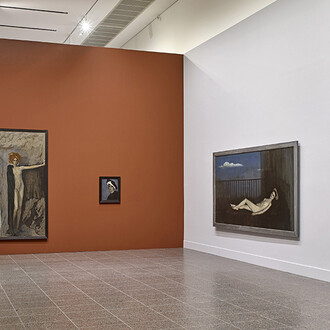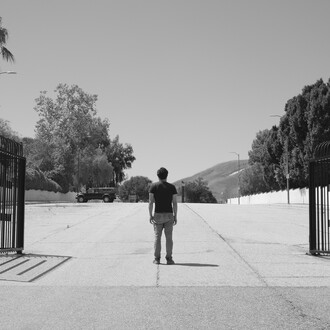A narrative of movement and stillness.
The works gathered here repeat a single form: the locomotive.
Each one is a model, built to scale, yet removed from any function. Their differences lie in surface and temperature— aluminium, copper, steel—materials that record both progress and decay.
Taken together, they trace no history of technology. Instead, they describe the movement of an idea: the promise of motion, the rhythm of departure and delay, the faith that every system keeps running.
Arranged in sequence, the sculptures form a procession without destination. The line moves from brightness to corrosion, from image to echo. The exhibition unfolds like a route remembered rather than travelled.
Each engine seems to wait for instructions that never come; each shelf, plinth, and pause becomes part of a larger mechanism of looking.
What remains is not speed, but stillness—the residue of belief in forward motion.
The machines endure, though their purpose has long since stopped.
Room 1 — “The mechanism”
Free-standing shelf in the center of the room: holds locomotives of varying materials and finishes (rusted steel, aluminium, patinated copper). The shelf acts like a museum vitrine without glass: an archive of progress, prototypes lined up for review. The room reads as a depot or archive: the machines presented for inspection, their utility already past. It establishes the exhibition’s tone — procedural, slightly forensic. Like a workshop or inspection hall.
Manuel Graf is interested in the big questions of humanity, the development of human existence, and its cultural achievements, which allow us to observe this development. The focus is on art itself, architecture, and craftsmanship, as well as reflections on contemporary visual persuasion strategies, such as those we know from advertising.
In his cross-media artistic oeuvre, Graf critically examines the boundary between social utopia and the realities of life. His works reveal an artistic Janus-facedness, a precisely observed, kaleidoscopic view of human existence that is not limited to the here and now, but also attempts to interpret our cultural history in retrospect. The theme of the locomotive was originally inspired by Jeff Koons' 1986 exhibition Luxury and degradation, which dealt with issues of class, education, and socioeconomic background.
Room 2 — “The line”
Wall shelves, each holding a single locomotive. Their shininess contrasts the matte walls and other finishes; it becomes a mirror, a phantom of modernity. The machines appear more animated, yet ghostly. The viewer experiences motion through stillness — a cinematic illusion created by light and body movement. Conceptually, this is where progress meets entropy.
Using digital techniques such as 3D animation and architectural rendering, Graf connects themes that constantly establish links between different territories and historically overlapping time periods. In his latest works, he consistently uses text-to-image AI to ultimately transfer virtually created objects into the real world as 3D prints and casts.
The juxtaposition of the real and the virtual in his work also extends to the question of whether the new technological achievements of our society will make the hoped-for utopia possible or instead bring about a dystopian scenario. It is this genuine curiosity about the world and the search for corresponding images that characterizes the artist Manuel Graf.
Room 3 — “The terminal”
One plinth holding a single locomotive. This is the “afterimage,” the end of the line. Position it slightly off-center, not frontal — so the viewer encounters it obliquely, like something remembered rather than witnessed. This room serves as the emotional coda. All motion has stopped, but the suggestion of continuity remains. It’s less an ending than a suspension.
Visitors move through the exhibition like through a sequence of thoughts rather than a narrative. Each locomotive is an image in three dimensions, its material surface a record of how memory attaches to form. The spaces become both archive and waiting room, industrial and domestic, past and future folded together.













